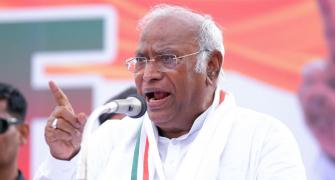Results of the 2001 Census show that the child sex ratio, defined as the number of female children in the 0-6 age group per 1000 male children, has registered a whopping 32-point decline in urban areas over the last ten years, while it has declined in rural areas by 14 points.
The Census also shows that the difference between the sex ratios of rural and urban areas has gone up, from around 13 in 1991 to 31 in 2001, indicating that urban areas have been the worst offenders in terms of female foeticide.
While the 1991 Census did not throw up any district in the country with a child sex ratio less than 800 in urban areas, the 2001 Census puts the number of such districts at 24. These districts house 4.7 per cent of the country's population.
Also, while there were only five districts with sex ratios in the 800-849 category in 1991, the 2001 census records 53 such districts.
Correspondingly, there is a sharp decline in the number of districts recording a sex ratio above 950.
While there were 231 such districts in 1991, only 137 have been found in 2001. Their share of the total population has also fallen sharply, from 37 per cent to 23 per cent.
The Census also shows that the situation has deteriorated more sharply in the northern and western parts of the country over the last 10 years than in the North Eastern, Central and Southern areas.
Gujarat has recorded the sharpest decline of 81 points in the sex ratio among urban areas, followed by Punjab with a 77-point decline and Haryana with a 75-point decline. Uttaranchal, with a 62-point fall in the ratio, comes next.
The sharpest fall in the sex ratio is in Dadra and Nagar Haveli, where it has fallen by 92 points, from 997 to 885 over the ten year period.
In rural areas, the northern part of the country has fared the worst, followed by the west.
While the North East has shown mixed results, the rural parts of Central, Eastern and Southern India have seen the lowest declines.
The highest child sex ratio of 1040 has been recorded in a district in Sikkim, followed by the tribal district of Bastar in Chhatisgarh, with a ratio of 1020.
Rural Punjab also showed a sharp decline in the sex ratio, with a fall of 83 points, followed by Himachal Pradesh with a 66-point decline and Chandigarh with a 58-point decline.
In rural Haryana, the ratio fell by 53 points and in Uttaranchal by 38 points during the ten- year period between 1991 and 2001.
An improvement in the rural sex ratio was seen in Lakshwadeep, where it went up by 59 points, in Kerala, Pondicherry, Andaman and Nicobar islands, Sikkim with an increase of 24 points, and in Mizoram and Tripura.
In urban areas, the ratio improved in Arunachal Pradesh by 35 points and in Manipur by 8 points. It remained unchanged in Kerala.
In all other states and union territories, the urban sex ratio has deteriorated between 1991 and 2001.






